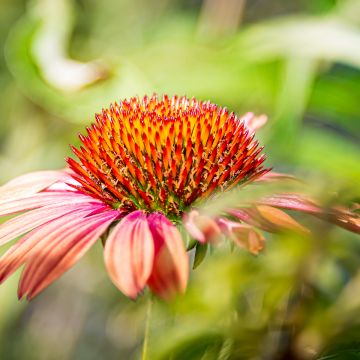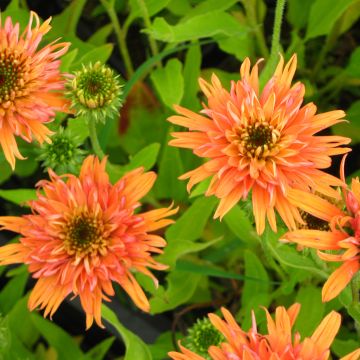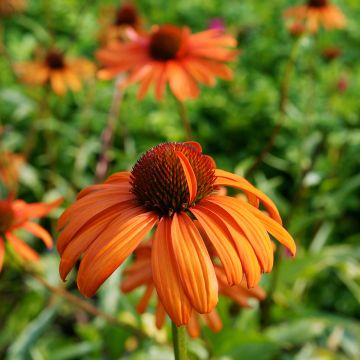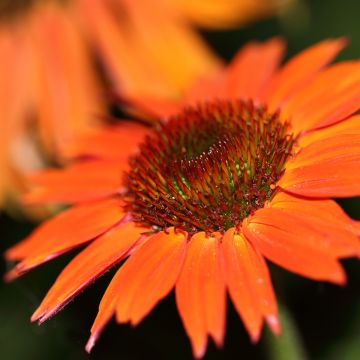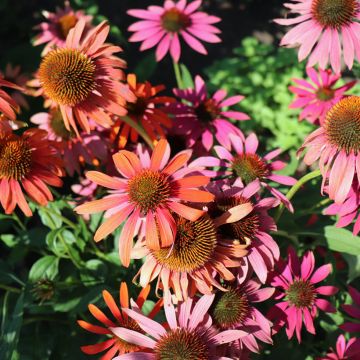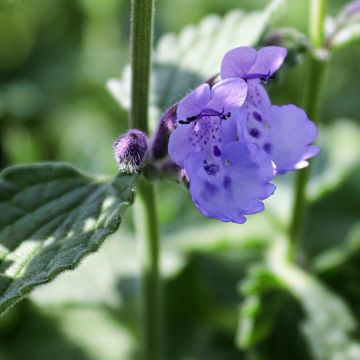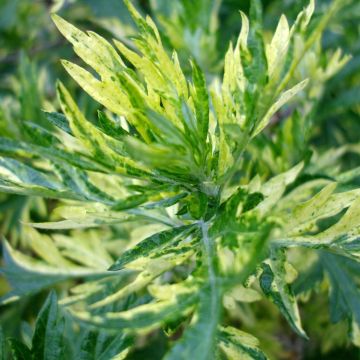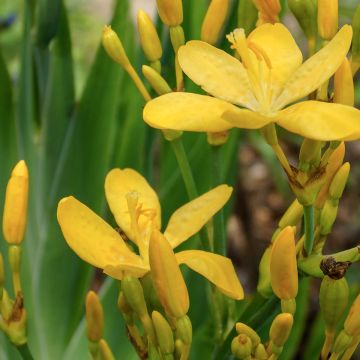Shipping country and language
Your country of residence may be:
Your country of residence is:
For a better user experience on our website, you can select:
Your shipping country:
Andorra
Austria
Belgium
Bulgaria
Canada
Chile
Croatia
Cyprus
Czechia
Denmark
Estonia
Finland
France
Germany
Greece
Hungary
Iceland
Ireland
Italy
Latvia
Lithuania
Luxembourg
Malta
Monaco
Netherlands
Poland
Portugal
Romania
Slovakia
Slovenia
Spain
Sweden
Switzerland
United Kingdom
We only deliver seed and bulb products to your country. If you add other products to your basket, they cannot be shipped.
Language:
French
German
Spanish
English
My Account
Hello
My wish lists
Plantfit
Log in / Register
Existing customer?
New customer?
Create an account to track your orders, access our customer service and, if you wish, make the most of our upcoming offers.


Echinacea Secret Lust - Rudbeckia pourpre


Echinacea Secret Lust - Rudbeckia pourpre
Echinacea Secret Lust - Purple Coneflower
Echinacea purpurea Secret Lust
Purple Coneflower, Eastern Purple Coneflower
Why not try an alternative variety in stock?
View all →Order in the next for dispatch today!
Dispatch by letter from €3.90.
Delivery charge from €5.90 Oversize package delivery charge from €6.90.
More information
This item is not available in your country.
Schedule delivery date,
and select date in basket
This plant carries a 12 months recovery warranty
More information
We guarantee the quality of our plants for a full growing cycle, and will replace at our expense any plant that fails to recover under normal climatic and planting conditions.
From €5.90 for pickup delivery and €6.90 for home delivery
Express home delivery from €8.90.
Does this plant fit my garden?
Set up your Plantfit profile →
Description
'Secret Lust' Purple Coneflower is a compact variety that is highly floriferous in summer, with a flamboyant colour. It is a vigorous and easy-to-grow perennial whose flowers display a prominent pompom-shaped centre resting on a crown of slender ligules that transition from orange to scarlet. These intense colours do not fade, in the sun in flower beds or in dried or fresh bouquets. It will bring life to borders and flower beds until the first frost.
Coneflower is a hardy perennial plant belonging to the aster family, native to the western United States. 'Secret Lust' is an improved horticultural selection derived from this species. Like all the varieties in the "Secret" series, this selection is sterile and has an endless flowering period, with flowers durable in vases and flower beds, and exceptional colour. The plant slowly forms a dense and sturdy clump, reaching 60 cm (24in) high and 40 cm (16in) wide. The stems are strong and well-held, and the vegetation does not collapse. The opposite, lanceolate, green leaves are covered in rough hairs. Fragrant flowering occurs from July to the end of summer, accompanying asters and ornamental tobacco plants, loved by butterflies. The branched, reddish-coloured flower stalks each terminate in a large solitary head measuring 8 cm (3in) in diameter with a prominent disc composed of tiny florets ranging from bright orange to scarlet red with thin, slightly trailing ligules around the centre. Birds are fond of the fruits that follow. This plant firmly and deeply anchors itself in the soil with its well-developed root system. It withstands frost well and is drought-tolerant.
'Secret Lust' Purple Coneflower has a vibrant flowering display until the onset of autumn. It can be used in border plantings alongside daisies, Echinops ritro thistles, or gauras, for example. Lighten up the scene by mixing in California poppies, bronze fennel, or ornamental grasses like Stipa tenuifolia or Muhlenbergia capillaris. Its colours are splendid in flower beds and bouquets.
Echinacea Secret Lust - Purple Coneflower in pictures


Flowering
Foliage
Plant habit
Botanical data
Echinacea
purpurea
Secret Lust
Asteraceae
Purple Coneflower, Eastern Purple Coneflower
Cultivar or hybrid
Other Echinacea - Coneflower
Planting and care
'Secret Lust' purple Echinacea takes time to establish as its growth is rather slow. However, once in place, it requires no special care and is very resistant to pests and diseases. It dislikes soils that are waterlogged in winter, but apart from this small requirement, it does not mind any type of soil. It is best planted in spring, in a sunny position, in a mixture of compost and garden soil. Work the soil deeply so that it can accommodate its root system. Remove faded flowers as they appear or make frequent large bouquets. Divide the clump when flowering slows down to revitalise the plant and prevent it from weakening. It is a rhizome plant that can spread. Mulch the base in May to keep it moist in summer.
Planting period
Intended location
Care
This item has not been reviewed yet - be the first to leave a review about it.
Summer flowering perennials
Haven't found what you were looking for?
Hardiness is the lowest winter temperature a plant can endure without suffering serious damage or even dying. However, hardiness is affected by location (a sheltered area, such as a patio), protection (winter cover) and soil type (hardiness is improved by well-drained soil).

Photo Sharing Terms & Conditions
In order to encourage gardeners to interact and share their experiences, Promesse de fleurs offers various media enabling content to be uploaded onto its Site - in particular via the ‘Photo sharing’ module.
The User agrees to refrain from:
- Posting any content that is illegal, prejudicial, insulting, racist, inciteful to hatred, revisionist, contrary to public decency, that infringes on privacy or on the privacy rights of third parties, in particular the publicity rights of persons and goods, intellectual property rights, or the right to privacy.
- Submitting content on behalf of a third party;
- Impersonate the identity of a third party and/or publish any personal information about a third party;
In general, the User undertakes to refrain from any unethical behaviour.
All Content (in particular text, comments, files, images, photos, videos, creative works, etc.), which may be subject to property or intellectual property rights, image or other private rights, shall remain the property of the User, subject to the limited rights granted by the terms of the licence granted by Promesse de fleurs as stated below. Users are at liberty to publish or not to publish such Content on the Site, notably via the ‘Photo Sharing’ facility, and accept that this Content shall be made public and freely accessible, notably on the Internet.
Users further acknowledge, undertake to have ,and guarantee that they hold all necessary rights and permissions to publish such material on the Site, in particular with regard to the legislation in force pertaining to any privacy, property, intellectual property, image, or contractual rights, or rights of any other nature. By publishing such Content on the Site, Users acknowledge accepting full liability as publishers of the Content within the meaning of the law, and grant Promesse de fleurs, free of charge, an inclusive, worldwide licence for the said Content for the entire duration of its publication, including all reproduction, representation, up/downloading, displaying, performing, transmission, and storage rights.
Users also grant permission for their name to be linked to the Content and accept that this link may not always be made available.
By engaging in posting material, Users consent to their Content becoming automatically accessible on the Internet, in particular on other sites and/or blogs and/or web pages of the Promesse de fleurs site, including in particular social pages and the Promesse de fleurs catalogue.
Users may secure the removal of entrusted content free of charge by issuing a simple request via our contact form.
The flowering period indicated on our website applies to countries and regions located in USDA zone 8 (France, the United Kingdom, Ireland, the Netherlands, etc.)
It will vary according to where you live:
- In zones 9 to 10 (Italy, Spain, Greece, etc.), flowering will occur about 2 to 4 weeks earlier.
- In zones 6 to 7 (Germany, Poland, Slovenia, and lower mountainous regions), flowering will be delayed by 2 to 3 weeks.
- In zone 5 (Central Europe, Scandinavia), blooming will be delayed by 3 to 5 weeks.
In temperate climates, pruning of spring-flowering shrubs (forsythia, spireas, etc.) should be done just after flowering.
Pruning of summer-flowering shrubs (Indian Lilac, Perovskia, etc.) can be done in winter or spring.
In cold regions as well as with frost-sensitive plants, avoid pruning too early when severe frosts may still occur.
The planting period indicated on our website applies to countries and regions located in USDA zone 8 (France, United Kingdom, Ireland, Netherlands).
It will vary according to where you live:
- In Mediterranean zones (Marseille, Madrid, Milan, etc.), autumn and winter are the best planting periods.
- In continental zones (Strasbourg, Munich, Vienna, etc.), delay planting by 2 to 3 weeks in spring and bring it forward by 2 to 4 weeks in autumn.
- In mountainous regions (the Alps, Pyrenees, Carpathians, etc.), it is best to plant in late spring (May-June) or late summer (August-September).
The harvesting period indicated on our website applies to countries and regions in USDA zone 8 (France, England, Ireland, the Netherlands).
In colder areas (Scandinavia, Poland, Austria...) fruit and vegetable harvests are likely to be delayed by 3-4 weeks.
In warmer areas (Italy, Spain, Greece, etc.), harvesting will probably take place earlier, depending on weather conditions.
The sowing periods indicated on our website apply to countries and regions within USDA Zone 8 (France, UK, Ireland, Netherlands).
In colder areas (Scandinavia, Poland, Austria...), delay any outdoor sowing by 3-4 weeks, or sow under glass.
In warmer climes (Italy, Spain, Greece, etc.), bring outdoor sowing forward by a few weeks.

